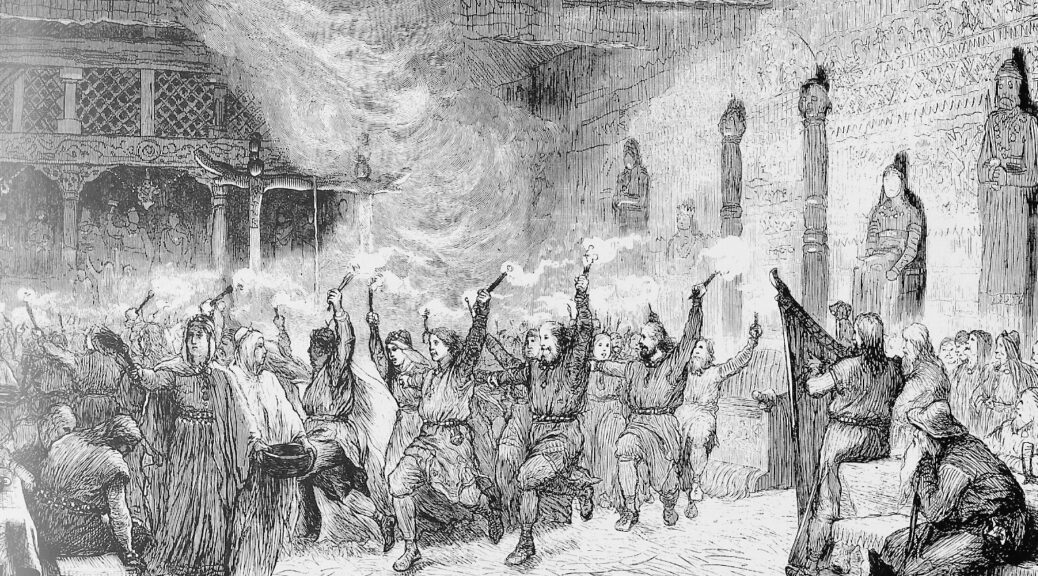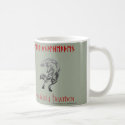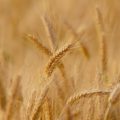
Celebrate Dísablót on May 14th
Dísablót, one of the most significant pagan festivals celebrated in ancient Scandinavia, is still remembered and commemorated by modern-day pagans and heathens. This springtime festival, which usually takes place on May 14th, was dedicated to the dísir, the female spirits and goddesses who were believed to protect and bless the fertility of the land, animals, and people. Here, we will explore the history, traditions, and significance of Dísablót.
Origins and Meaning of Dísablót
The word “blót” in Old Norse means sacrifice or offering. Ancient Heathens performed Blót ceremonies to appease the gods and goddesses. Our ancestors sought their blessings and favors, and to ensure the community’s prosperity and protection. Dísablót, therefore, is a special blót dedicated to the dísir. Heathens consider the dísir to be our guardians and benefactors. The term “dísir” (singular dís) refers to ancestral female spirits. These ancestral spirits watch over their descendants and guide them in their daily lives. Eventually, the dísir evolved into a type of goddess, whom we honor.
Our ancestors held Dísablót in the spring or early summer, at the beginning of the growing season. They looked to spring as at time of renewal, hope, and optimism. The harsh winter had passed and the land was ready for planting and harvesting. People invoked and praised the dísir for maintaining fertility. People also prayed to them for protection and guidance in family, marriage, childbirth, and health. Dísablót is a celebration of life and fertility, and a form of ancestor worship.
Dísablót Rituals and Offerings
Not surprisingly, Dísablót practices varied from region to region and community to community. However, this festival had some common elements and themes. People offered food and drink to the dísir. The offerings could be meat, bread, cheese, beer, mead, or other delicacies. People placed the food on a special altar or platform, which they decorated with flowers, greens, and ribbons. The altar became the connection between our world and the dísir.
People lit bonfires to honor the dísir and to provide light and warmth. People also lit fires to ward off evil spirits and diseases. Our ancestors considered the smoke and ashes sacred, and sometimes used them for divination or healing.
Music, dance, and poetry were also integral to Dísablót. Singing and playing instruments were ways people praised and thanked the dísir, as well as expressing joy and gratitude for spring’s arrival. The bards and skalds, who were the Norse poets and storytellers, recited epic tales and sagas of the gods and heroes.
Dísablót was also a time for socializing and feasting. The participants, who could be family members, friends, or neighbors, shared the offerings and the food, and drank together. This communal aspect of Dísablót reflected the importance of kinship and community bonds in Norse society.
Dísablót in Modern Times
Although the practice of Dísablót ceased with the Christianization of Scandinavia in the Middle Ages, the memory and legacy of this festival have survived and been revived in modern times. Contemporary heathen and pagan communities have adapted and reinterpreted the rituals and meanings of Dísablót to fit their own beliefs and practices. Some groups hold public or private ceremonies that follow the traditional format of offering food, lighting fires, and reciting poetry. Others create their own variations that incorporate elements of personal spirituality or social activism.
Dísablót has also become a symbol of Norse identity and heritage. Some Scandinavian countries, such as Sweden and Iceland, have incorporated Dísablót into their cultural calendars as a way of preserving and promoting their historical traditions. Museums, festivals, and educational programs feature Dísablót as a way of educating the public about the pre-Christian past and the continuity of cultural values.
Moreover, Dísablót has gained popularity and recognition among non-Scandinavian pagans and heathens as a way of connecting with their ancestral roots and honoring the feminine divine. As the dísir represent a diverse range of female energies and archetypes, they are seen as a source of inspiration and empowerment for women and queer people. Dísablót, therefore, has taken on new meanings and significance for those who seek to reclaim their spiritual heritage and resist the dominant norms of patriarchal monotheism.
A Significant Holiday Worth Celebrating
Dísablót is a fascinating and rich festival that reflects the complex and diverse religious and cultural landscape of ancient Scandinavia. Its emphasis on fertility, ancestor worship, communal bonds, and artistic expression has resonated with people throughout history and across borders. Dísablót offers a valuable opportunity to explore and celebrate the feminine divine, the cycles of nature, and the power of community.
—
Did you know you can become my patron for as little as $5 a month? This entitles you to content not posted anywhere else. Plus you get to see posts like this three days before the public! Without patrons, I’d be having a very hard time keeping this blog going. Become a patron today!Become a Patron!




